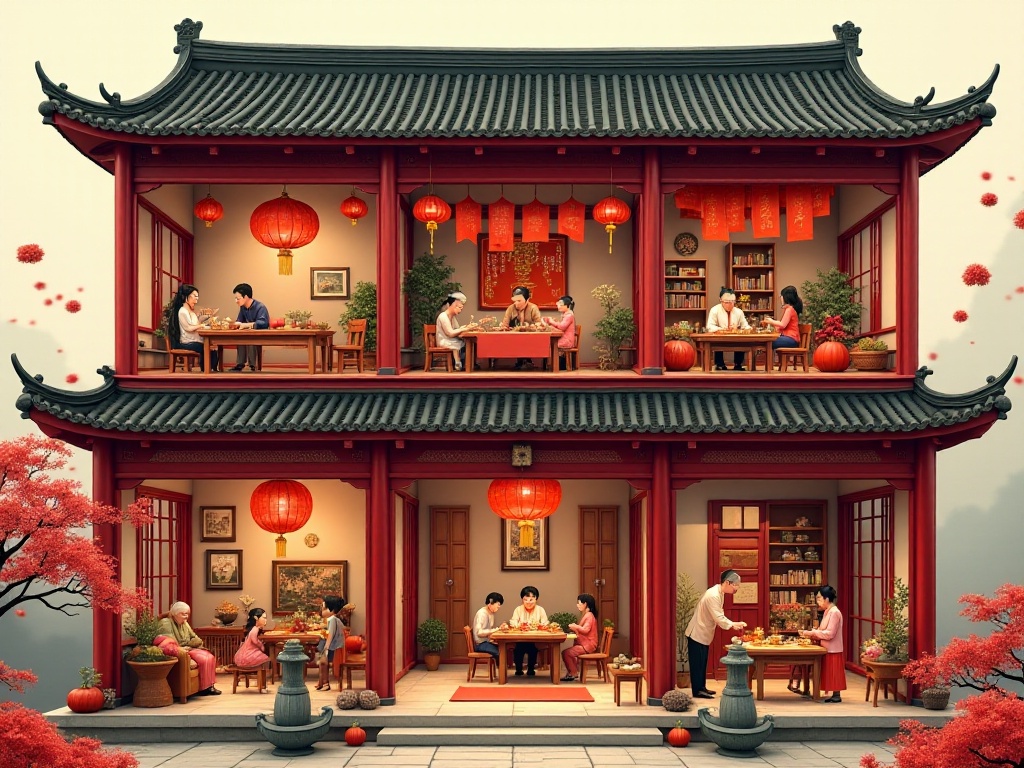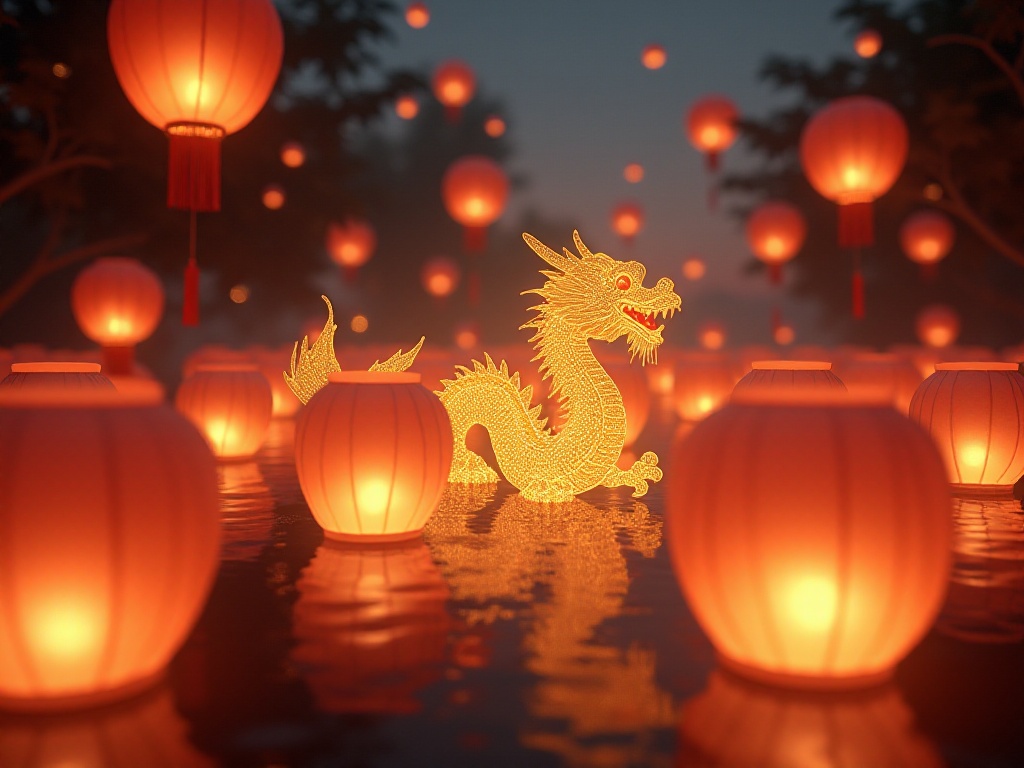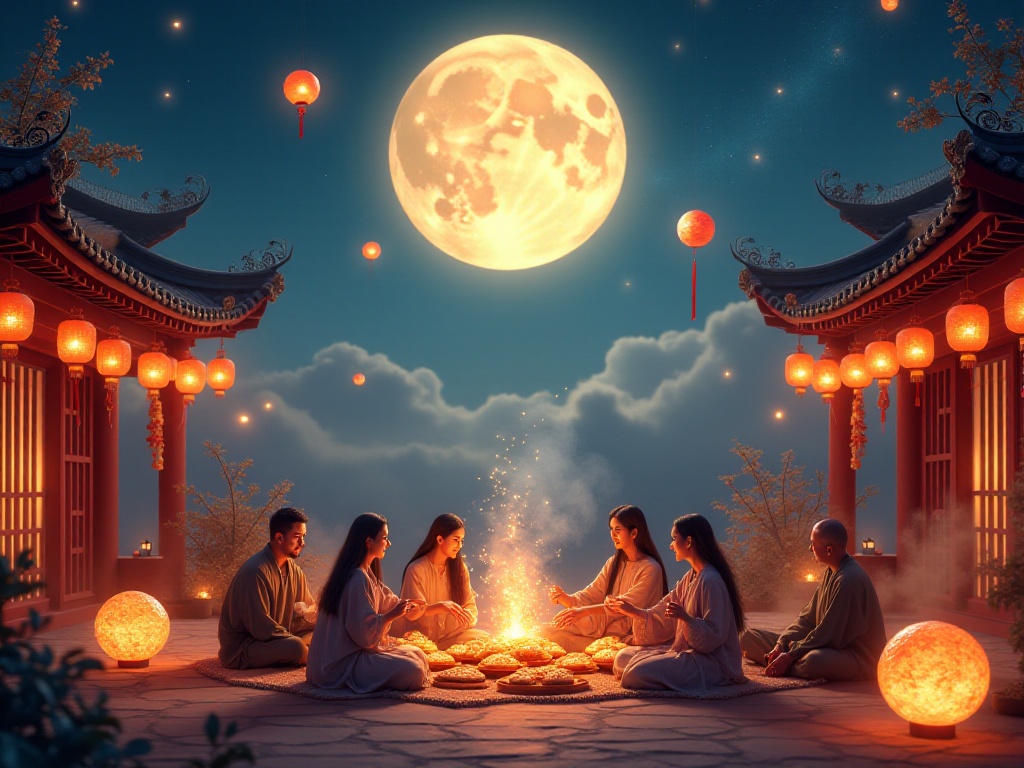Opening
Have you ever wondered why our traditional festivals are always inseparable from food? As someone who has loved eating since childhood, I've pondered this question for a long time. I remember when I was young, during every festival, my mother would make various delicious foods in different ways, and the aroma could be smelled throughout the entire street. It wasn't until a few days ago, while helping my mother make tangyuan at home, that I truly understood the deeper meaning behind these festival foods. Traditional festivals aren't just about having a meal; they're a thread that connects all our family memories. Today, let me share with you some interesting stories behind traditional festivals.
Unexpected Discovery
That evening, I was in the kitchen helping my mother prepare tangyuan for the Lantern Festival. Looking at the glutinous rice flour on the cutting board, I casually asked, "Mom, why do we have to eat tangyuan during the Lantern Festival?" Mom stopped what she was doing and smiled, saying, "Child, you don't know this?" Then she began telling me a story about tangyuan. As I listened to her narrative, my thoughts drifted back to many years ago.
Mom said that when she was young, every day before the Lantern Festival, grandmother would call her to the kitchen and teach her how to knead dough, roll balls, and prepare fillings. Back then, there was no ready-made glutinous rice flour; they had to grind it themselves. Grandmother would soak the glutinous rice in advance and then grind it into flour bit by bit using a stone mill. The grinding process was laborious, but grandmother never felt tired; instead, she would tell stories while grinding.

Historical Origins
It turns out our traditional festivals can be traced back to the Shang Dynasty. People back then had already begun holding sacrificial ceremonies on specific days. For example, the Spring Festival was initially meant for worshipping deities and ancestors. No wonder many families still maintain the custom of ancestor worship during the New Year.
In the Shang Dynasty, people used bronze vessels for sacrifices, and the ceremonies were very grand. By the Zhou Dynasty, a complete system of rituals had formed. Sacrificial ceremonies weren't just religious activities but social ones, serving as important bonds maintaining family relationships.
As time progressed, these sacrificial activities gradually evolved into our current traditional festivals. For instance, the Dragon Boat Festival was initially meant to commemorate Qu Yuan, and people would race dragon boats and make zongzi on this day. The zongzi of the Dragon Boat Festival is said to have evolved from the practice of people throwing rice balls into the river to prevent fish from eating Qu Yuan's body.

Food Codes
Speaking of eating, each festival has its unique food symbols. Eating dumplings during Spring Festival symbolizes the "changing of years"; eating tangyuan during the Lantern Festival symbolizes reunion. Behind these foods lies our ancestors' wisdom. Mom told me her tangyuan recipe was passed down from her grandmother, mixing glutinous rice flour with warm water in just the right proportion to make tangyuan that's both chewy and not too hard.
Mom said the key to making tangyuan is the water temperature and kneading force. The water temperature should be around 40 degrees Celsius so the dough will have a shine. When kneading, you should use your fingers slowly and not too forcefully, or the dough will become too hard. The kneaded dough needs to rest for a while so the tangyuan will be more elastic.
As for the filling, our family has always used black sesame paste. Mom said the black sesame needs to be freshly roasted until fragrant, then ground into powder using a grinder. The ground sesame powder should be mixed with an appropriate amount of sugar and lard to make the filling rich and delicious. Sometimes, Mom would add a bit of osmanthus to the filling, giving the cooked tangyuan a subtle floral fragrance.

Red Envelope Culture
The red envelope culture during Spring Festival is also interesting. Young people today might think receiving red envelopes is just about money, but originally, red envelopes were used to ward off evil and avoid disasters. In Chinese traditional culture, red represents good fortune, and the numbers printed on the currency also have special meanings. For example, many people now like to give red envelopes containing amounts like 520 or 1314, perfectly combining tradition with modernity.
In ancient times, red envelopes were initially called "ya sui qian" (money to suppress evil spirits). "Sui" in ancient times was also pronounced as "sui" (evil spirit), so ya sui qian was meant to suppress evil spirits. The earliest ya sui qian were copper coins strung together with red thread, which later evolved into today's red envelopes. The amount of money in red envelopes also has significance, usually being even numbers because even numbers symbolize good things coming in pairs in Chinese culture.
Red envelope culture is also keeping up with the times. Besides traditional cash red envelopes, electronic red envelopes have emerged. Although the form has changed, the good wishes carried by red envelopes remain unchanged. Every time I receive a red envelope from elders, beyond the joy of receiving money, I feel more of the elders' care and love.
[Due to length limitations, subsequent content will be sent in batches...]




